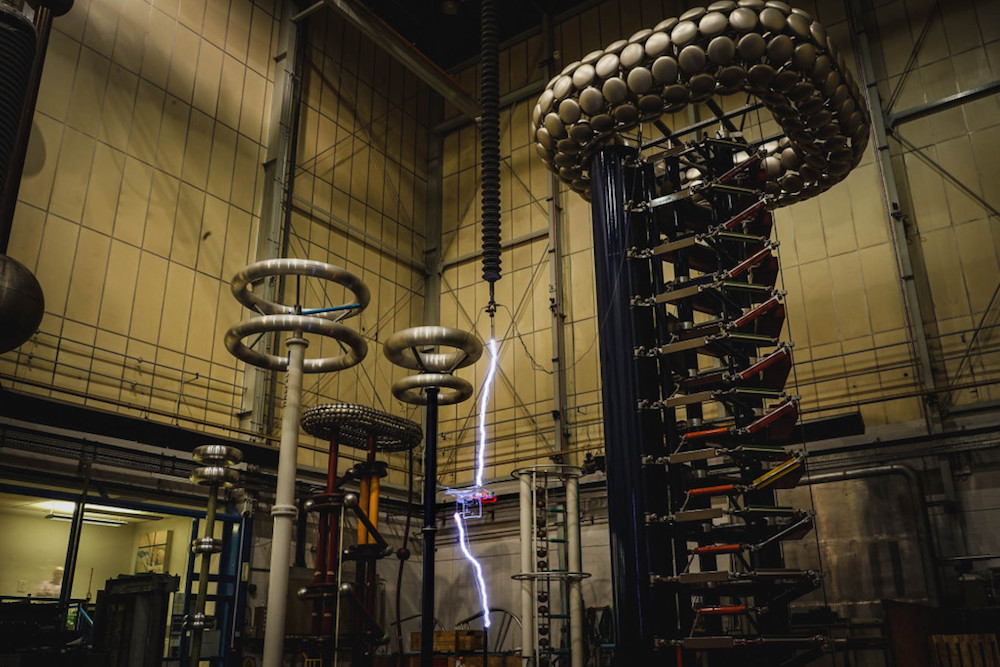Drone vs. Lightning: Guess Which One Wins?

What would happen if a drone got caught in an electrical storm?
That's the question YouTuber Tom Scott asked when he brought two DJI Phantom 3 drones to the University of Manchester’s High Voltage Laboratory. The British university's lab can generate lightning on command, thanks to an impulse generator that can create a bolt of more than 1 million volts. The drones were no match for the lightning, and were fried when caught in the middle of the bolt.
For the first experiment, a drone was tethered to the ground (to ensure it wouldn't fly out of the bolt's path) and shocked with more than 1 million volts of electricity. Slow-motion video of the shock showed that the lightning strike went through the drone, and the robotic flyer came crashing down. [Electric Earth: Stunning Images of Lightning]
"The electricity passed straight through, flowing from one of the propellers to exit through the foot of the drone," Enna Bartlett, digital coordinator for the university, described in a blog post. "Surprisingly there were no visible marks on the outside of the drone, but that doesn’t mean that the insides got away unscathed; as it turns out, the electricity took the path of least resistance and fried all the sensitive internal electronics."
Electrical engineering researchers Vidyadhar Peesapati and Richard Gardner, who carried out the experiments to answer Scott's question, thought they'd try to protect the other drone in the second experiment. Rather than tether the done as is, the researchers added a lightning rod made of copper tape to act as a lightning conductor.
Though the copper tape was intended to attract the lightning atthe highest point on the drone, the propellers were still equally as tall (and attractive) to the bolt of electricity. In that experiment, the drone was more severely damaged than the first experiment. The researchers said the propellers were explosively pulled away from the drone due to the sheer force of the strike.
The tests made for an electrifying video on Scott's YouTube channel, but also added to scientists' understanding of how aeronautics interact with lightning.
Sign up for the Live Science daily newsletter now
Get the world’s most fascinating discoveries delivered straight to your inbox.
"With our understanding of how airplanes behave in thunderstorms and how to provide protection for them," Bartlett wrote, "this knowledge could be applied to drone technology to ensure the drone and its pilot stays safe should they fly in adverse weather conditions."
Original article on Live Science.











